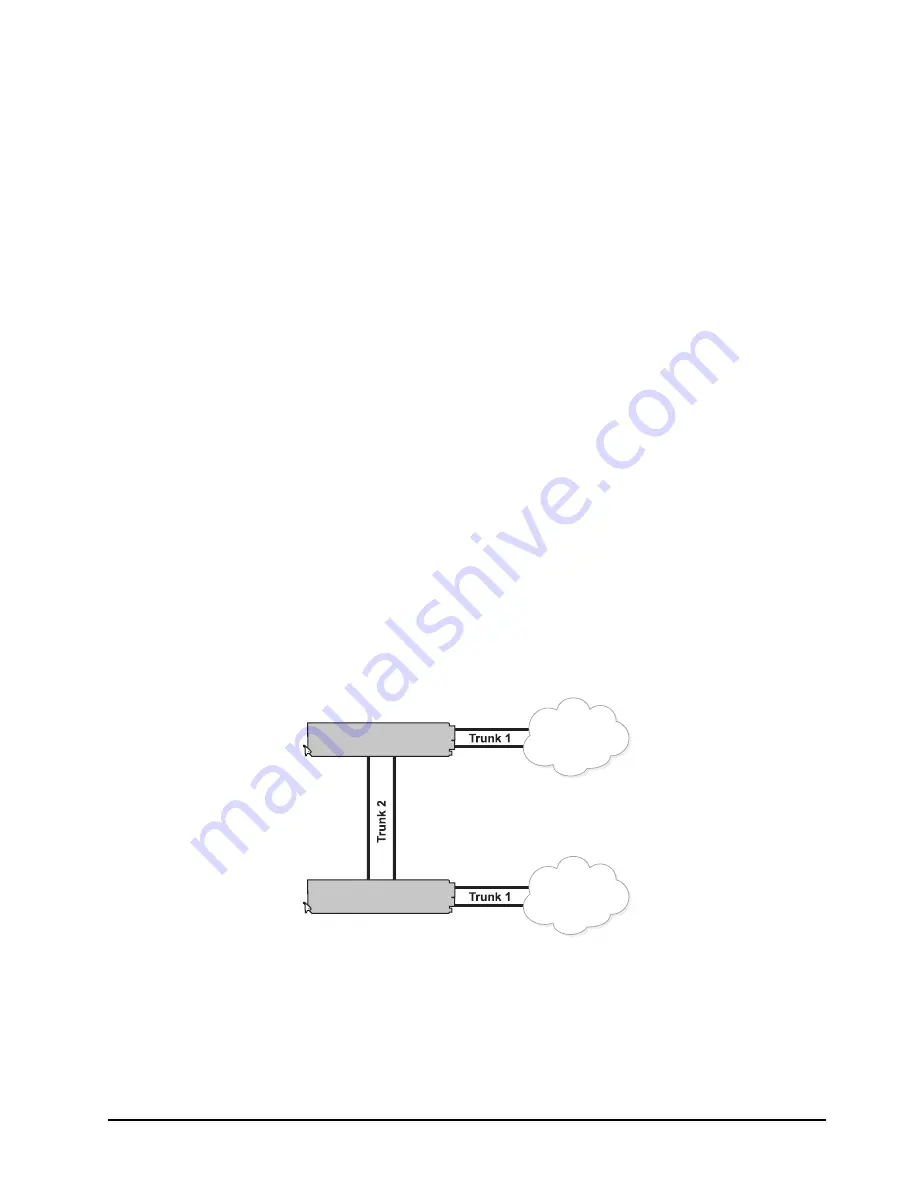
CES-8940 User Manual (Iss. 02)
Configuration • 3–9
Troubleshooting a Loop
When a loop is created, the CES-8940 may automatically detect the loop and disable the
appropriate ports. When this occurs, the LEDs on the rear module and the card-edge flash in
unison for the affected ports. Note that the network may be able to avoid the loop if it has
spanning tree capability.
Use one of the following methods to troubleshoot:
• Disable the ports in DashBoard and enable them one at a time to see which port is causing
the loop.
• Disconnect the cables from the ports on the rear modules and then re-connect the cables
one at a time.
• Disconnect the cables from the ports, re-configure the card, and then re-connect the
cables one at a time. Use this method when DashBoard cannot connect to the card.
Exceptions
There are exceptions for permitting a looping system: multiple paths are created for redundancy
or for high bandwidth traffic. You can have two or more ports acting as a trunk group to increase
the bandwidth between two points. The trunk appears as one port in the generic switch mode of
operation. It also provides redundancy in that failure of one of the physical ports in the trunk
group forces all the traffic to the remaining link(s).
Figure 3.7
illustrates a setup with multiple
cards that are set for trunking at full bandwidth between the two cards.
Configuring a Trunking Group
The ports on each CES-8940 can be set up for 1:1 trunking between any ports or for
redundant/load sharing trunking. Each card supports two trunk groups between two devices with
each trunk group having up to four ports.
In a configuration such as in
Figure 3.10
, you have multiple bandwidths and redundancy between
the multiple Corporate Networks with fiber connections. Note that each Corporate Network must
be configured to recognize these links are part of a trunk.
Figure 3.10
Setup of Multiple Bandwidths with Redundancy
Corporate
Network 1
Corporate
Network 2
CES-8940
CES-8940
















































